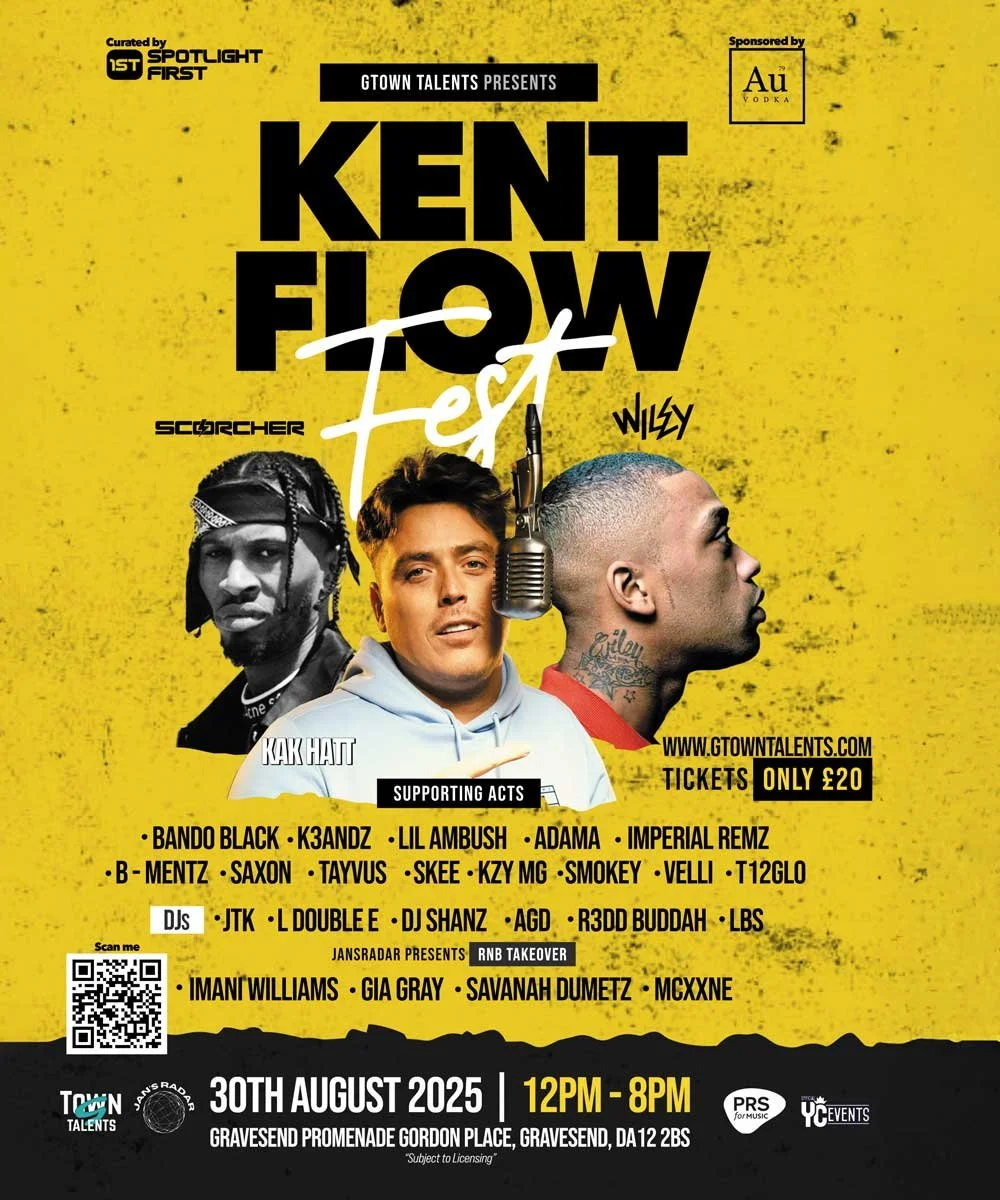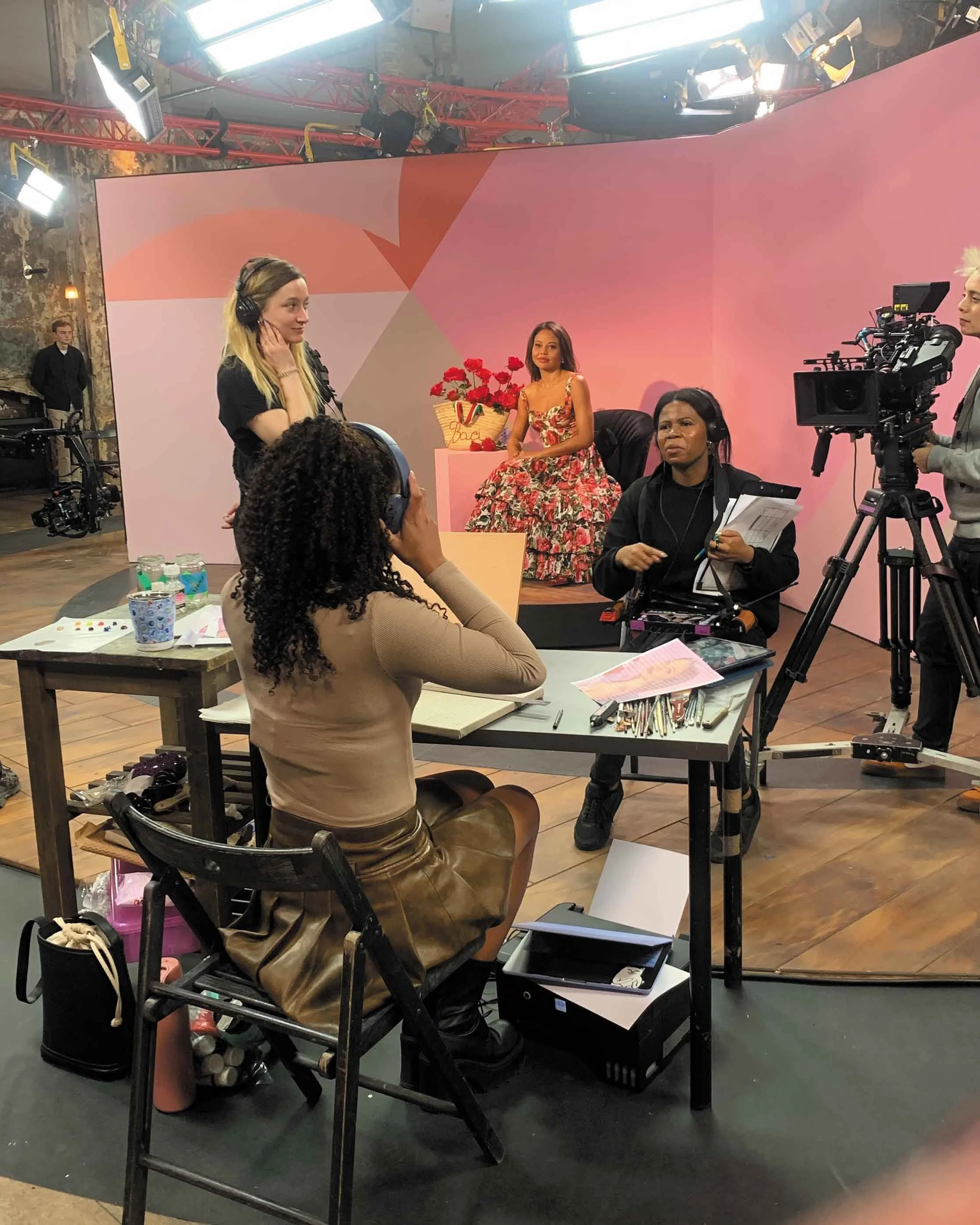Interview: Brianna Lois Parker on Portraiture, Top Boy, Sky Arts and the Full English
Portrait artist Brianna Lois Parker on normalising black figures in the art world through a British lens
Look over the shoulder of the guy in the cafe. At first glance you might not have noticed that the classic chalkboard menu lists Caribbean dishes, with jerk chicken rather than a bacon butty, while the palm tree latte art and plantain on his plate also easily blend into a British scenario.
This use of subtle amalgamations and ironic overtones have become signatures of Brianna Lois Parker (@briannaloisparker).
The Caribbean-British artist creates intimate, symbolic and culturally resonant portraits that centre on diasporic narratives and intergenerational connection.
Based in Plumstead, Brianna begins each piece with real-life experiences, which are translated into oil-based expressive compositions. You may have already seen her work.
Parker was awarded the Margate Art Prize by Dame Tracey Emin DBE RA in 2023 and was commissioned by Netflix to create a painting for Portrait of a Top Boy, an exhibition honouring the BAFTA Award-winning series Top Boy.
She also appeared on Sky Arts’ Portrait Artist of the Year, further showcasing her distinctive approach to portraiture.
This year, Brianna was shortlisted for Jackson’s Art Prize, placing in the top 0.2% of 12,964 entries and receiving the Judge’s Choice Award. We got in touch to find out more.
How did your journey into art begin?
I studied fine art at Kingston University and then my goal was to be an art therapist. I was going to do my Masters, but I kind of got sidetracked and started working as a studio assistant for the Connor Brothers. I was just working, painting for them, but I had started doing stuff in my spare time for my own practice and started working towards being an artist for myself, entering competitions and just building a name.
Lots of artists enter competitions and never get where you’ve got to…
I regularly just enter, looking at MoMA art competitions and then other websites, and just enter what I feel my work will be accepted in by looking at the judges and reading about past winners.
What was it like knowing you were on Sky Arts’ Portrait Artist of the Year, an internationally-watched show?
I am a really nervous person, so I was freezing a lot and not knowing what to say and doing loads of takes. But it was a really, really good confidence-boosting experience, just to know that if I can do something like that I can do anything, and just having a lot of affirmation from random strangers saying how they enjoy my artwork. I got a few commissions after that.
Did you see a lot of interest in your work after the show?
Yeah, I gained a lot of recognition from being on the show and I think it was mainly after they did an Instagram post about it all.
How would you describe your art to someone?
I would say that my artwork paints cultural and intergenerational experiences that aren’t often captured within the art world. I would say that my work is unapologetically black and British and, even though it is that, it relates to everyone who has grown up in London or grew up in the UK because through the imagery that I use it speaks to everyone.
And does it resonate in your own background?
When I went to uni, I was just painting myself and my peers without thinking about race, just wanting to do a beauty project, and just a project on beauty routines in the morning. I had a tutor who said ‘Oh, why are you doing this? You should be angry. You should be looking at pain.’.
They took me upstairs to see a student from the year above to see their work before telling me that I should be making work about oppression. It just span my head because in my area I just grew up being normal. I didn’t really see a difference, I had white friends, black friends, but it didn’t matter, everyone was just used to being in a diverse community. No one cares.
So then actually thinking about that, I then wanted to normalise black figures in the art world but through a British lens.
I feel like black art is so often Americanised or Afrocentric but not British. And I feel like being black and British is its own thing within itself. So I came up with this mirror series in which I wanted to capture portraits of people looking through a mirror, and then it slowly developed into capturing experiences and providing that representation.
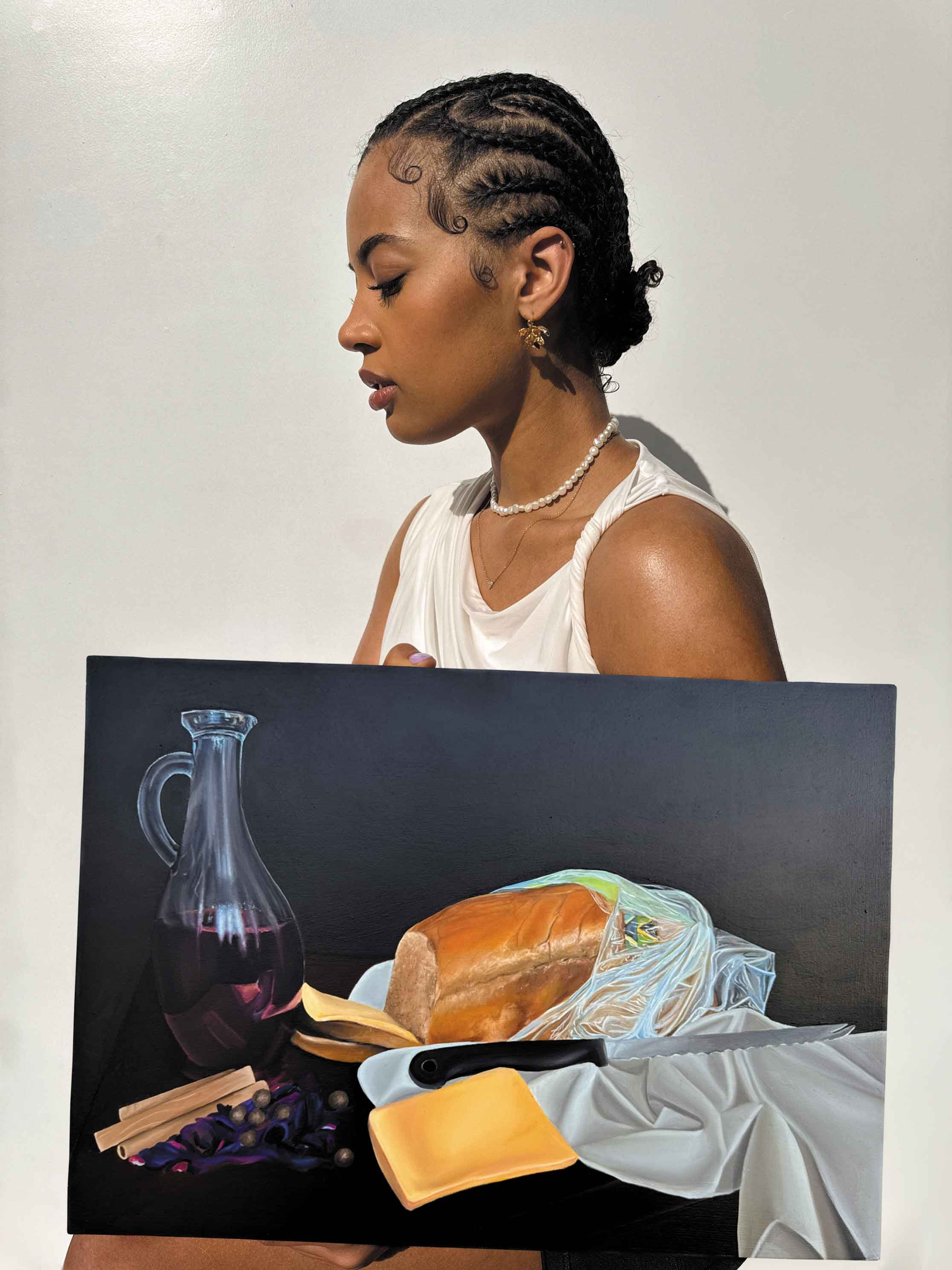
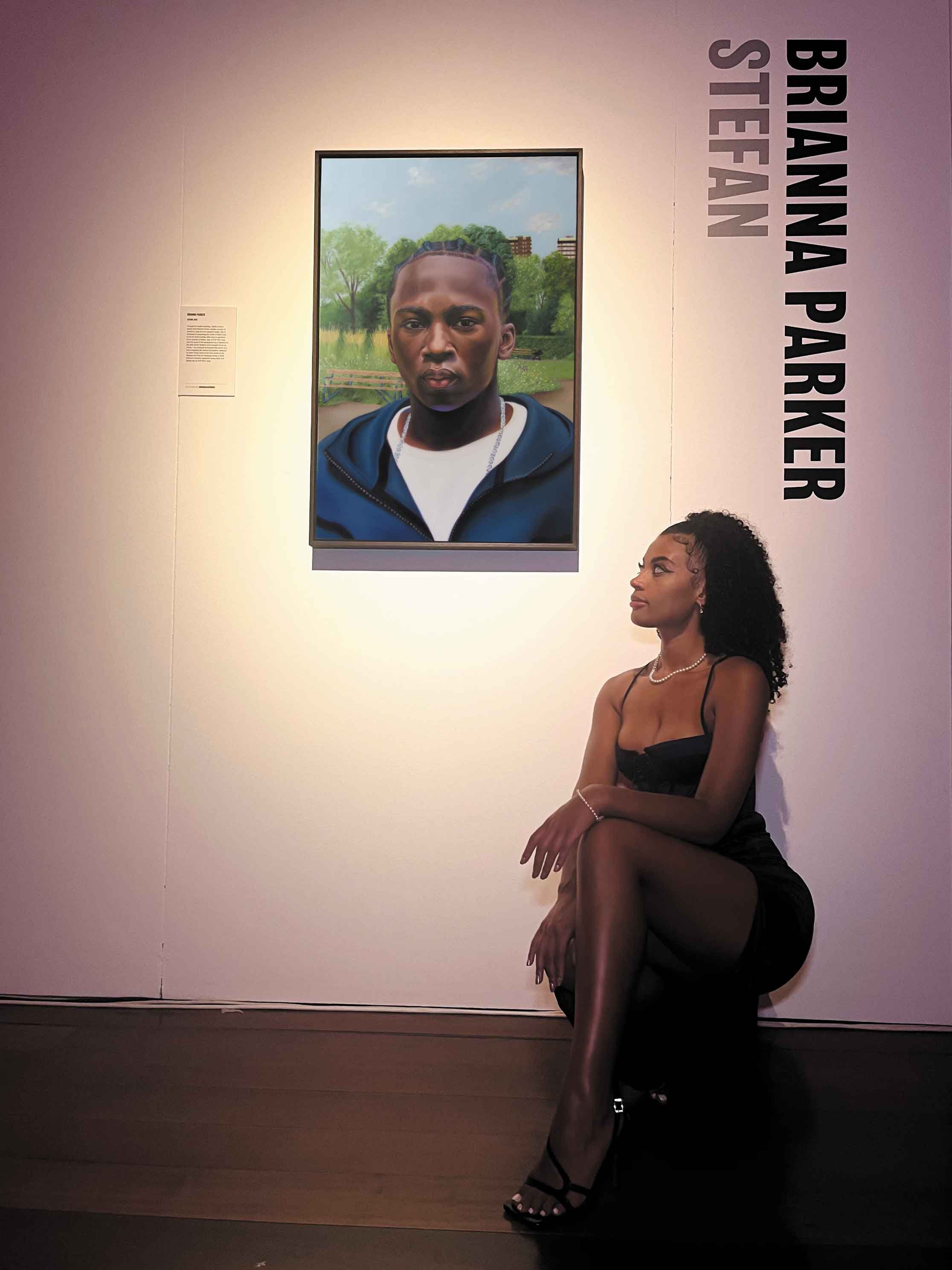

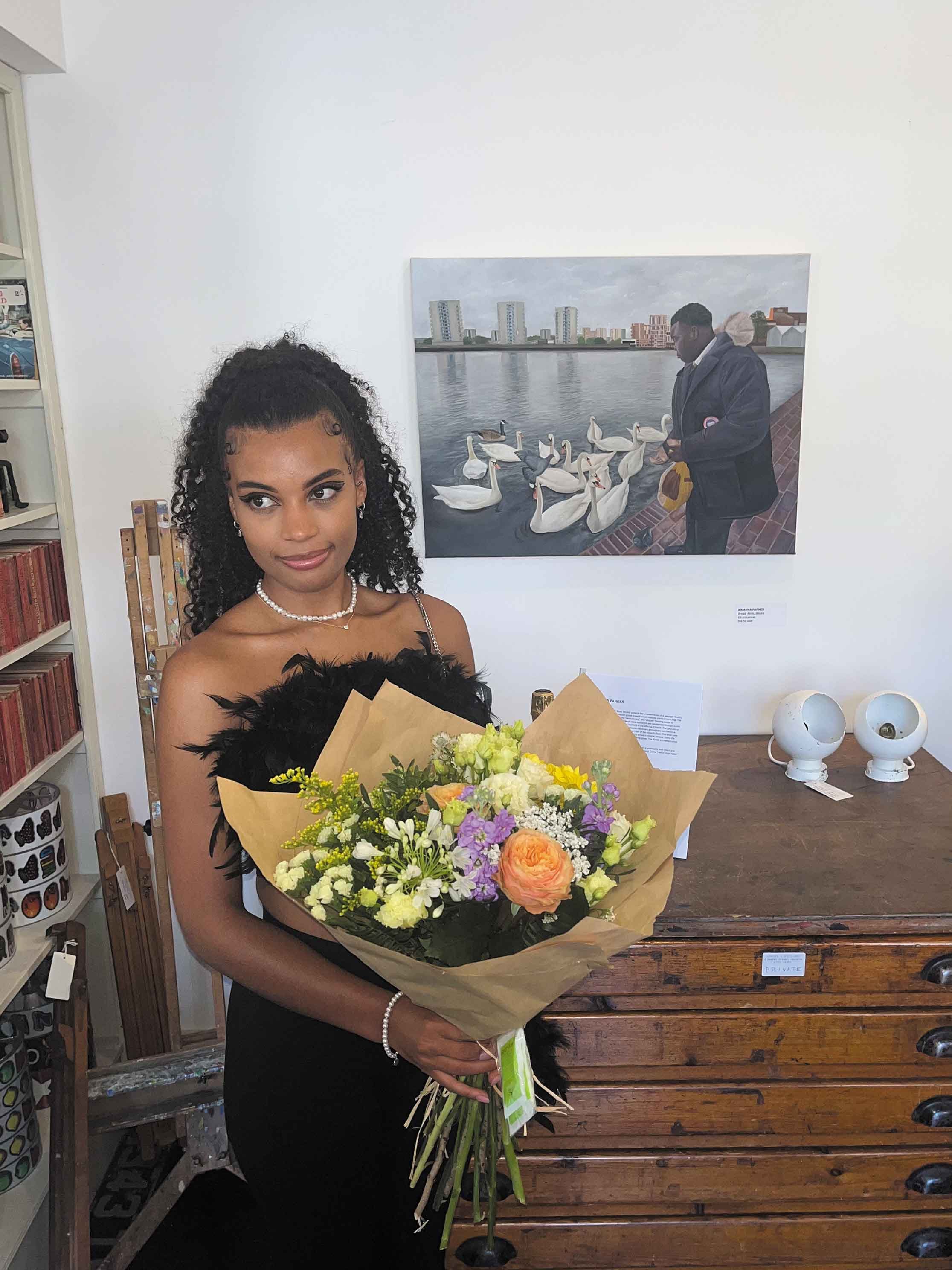
You won the Margate Art Prize for Bread, Bird, Blocks - what inspired that piece?
I usually just go roller-skating in that area. And I saw some kids feeding birds, and then I thought it was really wholesome and beautiful and I just wanted to capture it. Really simple. But I did want to feature the Canada goose because I feel, like teenagers, they love to have flashy items of clothing and just like looking at wealth and value and how it contrasts.
There’s a certain irony that he’s feeding a Canada goose while wearing a Canada Goose jacket. How would you go about capturing that image?
I work from photo references and I superimpose what I want. So the Canada goose wasn’t actually there, and then I got it from a previous photo and put it in. In general, it’s informed by photography and then you sort of create from it.
With Full English, that was taken in Catford. I took a picture in a cafe, but obviously the background is all from my imagination, so it’s just a combination of what’s in my brain and what I can take from photos.
The portraiture has a hyper-realism - is that the style you’ve always wanted to do?
It’s just about being raw and just being realistic, to be easy to interpret. I didn’t really want to abstract the meaning too much, so people can just easily digest and understand what the work is about.
Your piece Baby Blue for Top Boy, how did all that come about?
I think Netflix just DMd me.
I can’t imagine waking up to find a DM from Netflix!
It was crazy. I wasn’t sure what to think. I remember being at work and then I was just screaming coming home, but I couldn’t tell anyone, because I had to sign an NDA [non-disclosure agreement]. So it was just a big secret.
What happened next?
We worked through emails and had conversations and then they gave me the person they wanted me to paint. I went to Victoria Park, got a feel for the area, took my own reference pictures of the bench and how I wanted the painting to look, and then I superimposed the blocks into the background - they’re not actually there. And then I added the pram into the background to speak to the narrative of the adultification of black boys in the UK.
Oh, and I added my initials on the bench. It was an amazing experience.


